The Ultimate 6 Figure Value Ladder Blueprint

By Connor
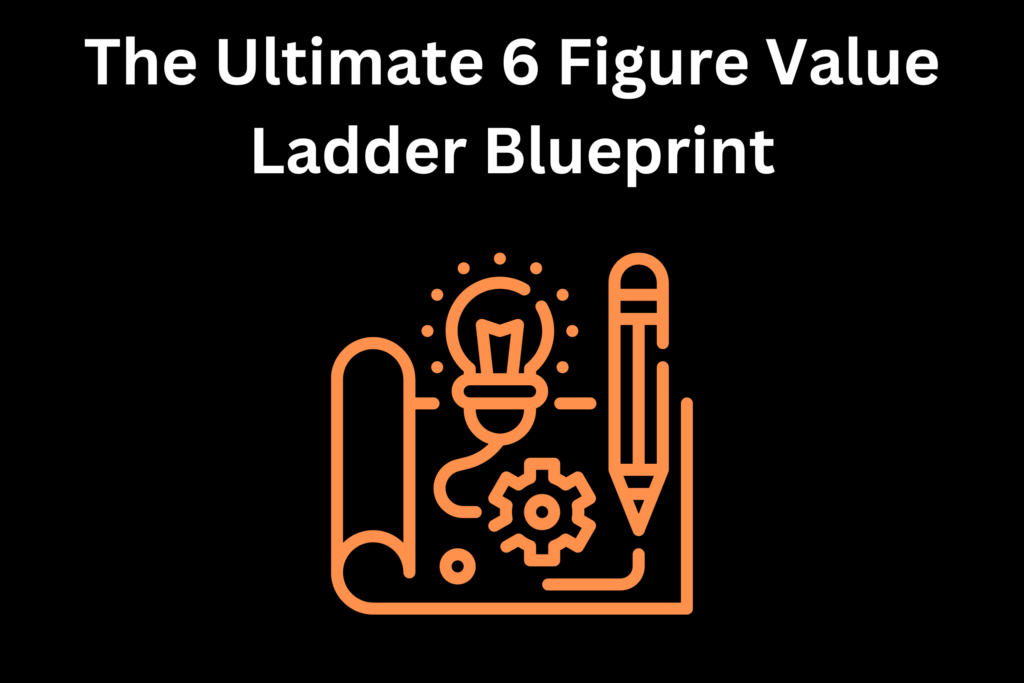
Developing a value ladder is the first stage in creating what will ultimately become your freedom business. I’ve said it time and time again, but your value ladder ends up informing everything you create. From your social posts to your newsletters to your backend workflows to your product suite, you can’t have any of it without first developing a value ladder.
While it’s a critical piece of building your business, it can also be very daunting.
I get it.
We look at all these massive creators and everything looks so put together.
Multiple products
Growth on autopilot
Effortless content flywheel
It’s SUPER overwhelming, especially when you’re first starting out.
Tell me if this sounds familiar: you want to get EVERYTHING right from the start, so you go find your favorite creator and try to model what they have. But you quickly realize, you have NO idea what you’re doing, so you end up getting so overwhelmed and out of your element that you never actually do anything. I did this with the likes of Dan Koe, Justin Welsh, Ben Meer, Jay Clouse, and a number of others.
But what you have to remember is that most of these guys (or gals) have been doing it for YEARS. It makes no sense to compare your year 1 to their year 5. Chris Williamson just made a podcast episode with Tim Ferris to celebrate 2 million subscribers on YouTube. It took him 7 YEARS and almost 800 episodes to get to that point. And he’s had more growth in the 4 months of this year than he did in years 1-5 combined.
If you’re doing anything as a creator, you have to play the long-term game. But that doesn’t mean you can’t craft your value ladder and start making money today. And that’s exactly what we’re looking at in this article: how to develop a 6 figure value ladder no matter what stage of the creator journey you’re at.
I’m going to break down what beginner, intermediate, and advanced value ladders look like, so you can start crafting yours today.
Before we dive in, let’s clear up a little terminology, so you know what to expect:
- Welcome Offer – this is a limited, one time offer (OTO) that you present to EVERY person who joins your email list. Welcome offers generally range between $7-$27.
- Origin Product – this is the “introductory” product that you offer to your audience. It’s a little more expensive than a welcome offer ($27-$97), and it’s designed to cater to the “beginners” in your audience. You’re essentially warming them up and getting them to “buy-in” to you and your ecosystem.
- Legacy Product – this is the main offering in your product suite that caters to the intermediates in your audience. It is the thing that you want to be known for. When people think of your name, they think of your legacy product (that’s why it’s called a “legacy” product! It’s what your known for or your “legacy”).
- Apex Product – this is your most advanced (and most expensive) product or service. You reserve this for only the advanced people in your audience who are already very committed to you, your business, and your overall philosophy.
Here is what all of this would look like on a value ladder:
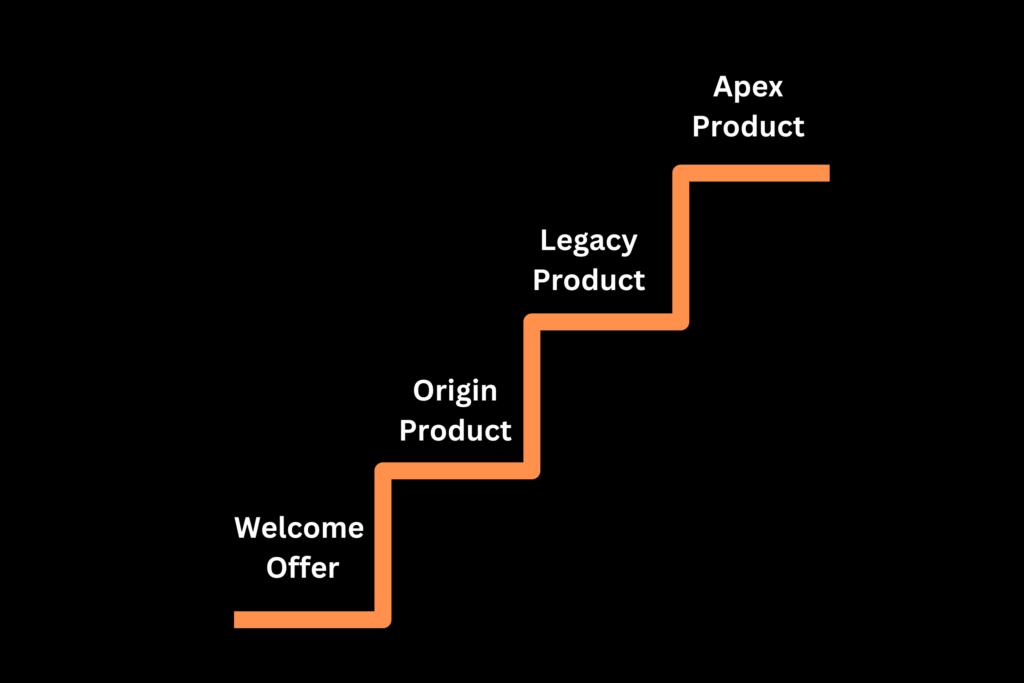
Beginner Value Ladders
Let’s start the discussion by looking at a beginner value ladder.
This is where EVERYONE starts, including me. Although I have my advanced value ladder mapped out so that I have some direction for where I want to take my brand, I’m still at a beginner value ladder myself.
Before we go any further, let’s clear the air a little bit. Beginner, intermediate, and advanced don’t refer to the success of the value ladders. As we’ll see throughout this discussion, some of the biggest and most profitable creators don’t have advanced value ladders. So don’t confuse beginner with low quality. You can still make a good amount of money and start building up your business even with a simple, beginner value ladder.
With that cleared up, let’s dive in to what a beginner value ladder actually is. Like I said, it’s simple. It has 2 components:
- Welcome Offer
- Legacy Product
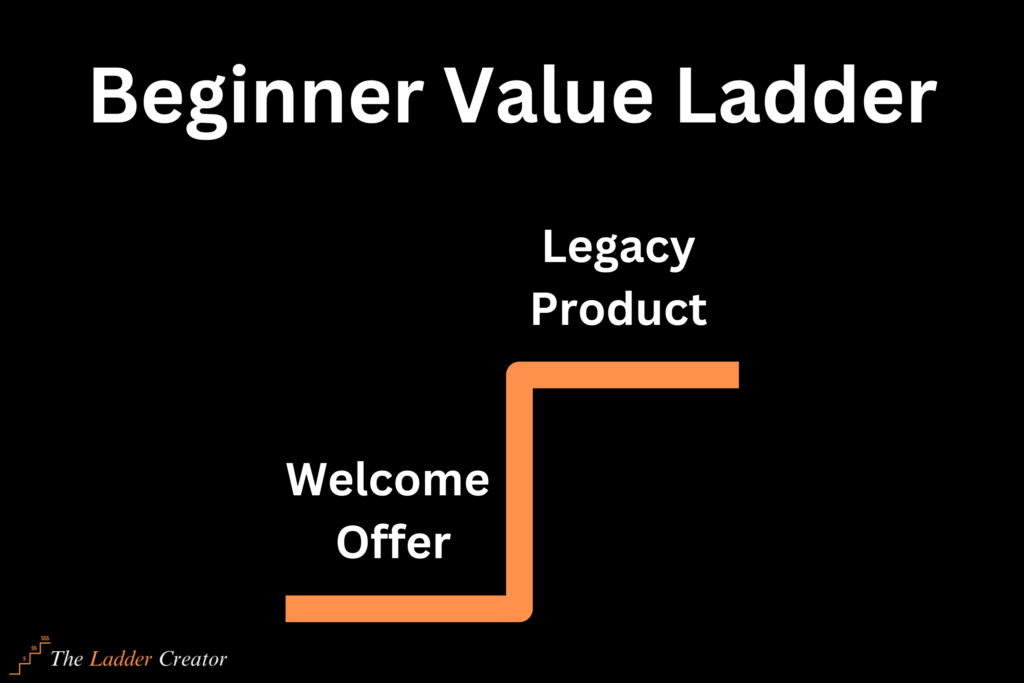
Like I mentioned in the introduction, the legacy product is your thing, so you want to include it in every single value ladder that you create, no matter if you’re a beginner, intermediate, or advanced.
The main goal of a beginner value ladder is 2 fold:
- Use the Welcome Offer to get practice building a product and start identifying what your audience wants and who the buyers are
- Determine the overall transformation or goal of your business
Number 2 is MUCH more important here. Your entire product suite will be built around this singular goal, so it’s important to take your time and think about it. For example, my main objective is to help creators and solopreneurs build 6 figure value ladders that can power their freedom businesses. Everything I create, from products to content, has this goal in mind. For somebody like Justin Moore of Creator Wizard, look at what his main objective is:

That last sentence says it all. “Justin’s mission is to enable creators big and small to land 1 million paid brand partnerships by 2032.”
Everything that he creates has this vision in mind, so when he’s building out his value ladder (which is actually very simple), he knows exactly what to put in each spot. He has an upcoming book, an origin product, and a legacy product. That’s about it (he also has an apex product that he only offers to people who have made it through his cohort, but he doesn’t really advertise that). And every single one of these products has the above goal: getting big and small creators alike paid brand partnerships.
You can start crafting your beginner value ladder immediately. You don’t need fancy software or a huge following. All you need is a vision for what you want to build and how you want to impact people. Then break that up into a small welcome offer and start building your legacy product.
One last thing to note about beginner value ladders: if you need cashflow immediately, then offering coaching or a DFY service as your “legacy product” while you’re still building out your real legacy product is a decent option. Just be careful to stay out of the client trap and the platinum handcuffs. Client work can be great for creating short-term revenue, but don’t get so bogged down in it that you have zero time to create content and build your larger vision. While you might make more money in the short-term, freedom businesses are the goal, and it takes MUCH longer (and usually involves hiring) to achieve real freedom if you focus strictly on client work. Obviously, do what you need to do to pay your bills and live life, but stay laser focused on what you want to build in the long-run.
Intermediate Value Ladders
The coolest thing about value ladders is that they grow with you. Once you’ve grown past the beginner phase, you don’t start all over. You simply add to what you’ve already built and continue to build leverage. Developing a strong value ladder is one of the most important digital assets to invest in. Here is one of my favorite tweets from James Clear (courtesy of a Kieran Drew newsletter):

Your value ladder is the ultimate asset that compounds. Over time, you add more to it AND improve the products already inside of it. Once you reach the intermediate stage, you still have the core from your beginner value ladder, but you simply add a few more elements:
- Lead magnet (new)
- Welcome offer (same as beginner value ladder)
- Origin product (new)
- Legacy product (same as beginner value ladder)
Once you reach the intermediate stage, you’ll have some good traction, so you should start building simple funnels with cart bumps and upsells as well.
As you can see, the intermediate value ladder isn’t much different than the beginner value ladder. You add a lead magnet and an origin product, but everything else remains the same (for more info on lead magnets, check out this LinkedIn post or one of my favorite articles from The Writer Creator Newsletter).
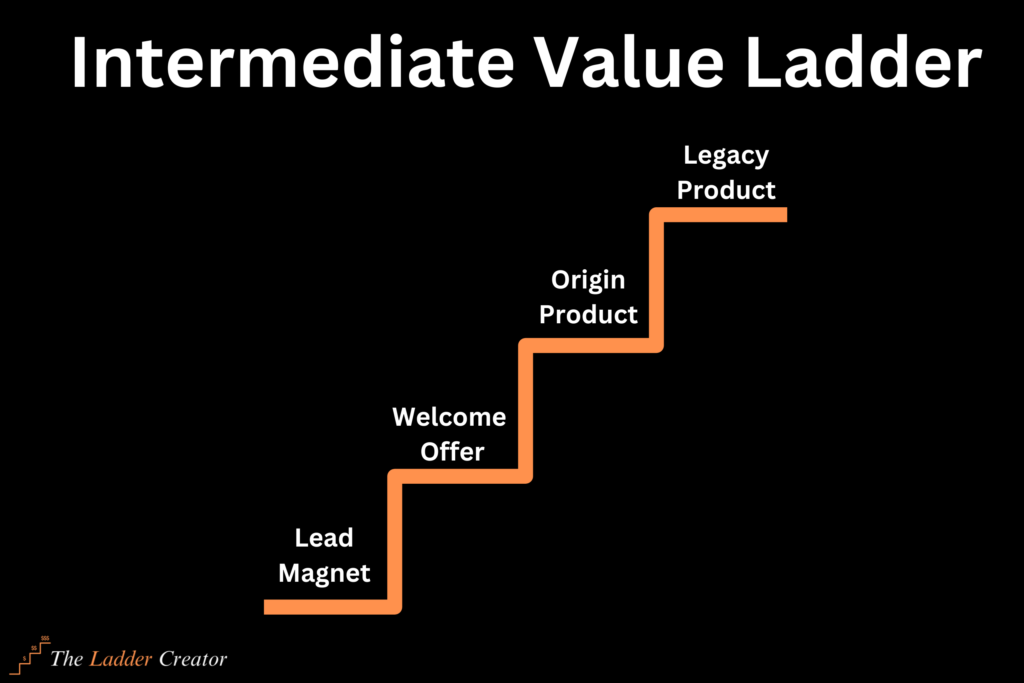
For a great example of an intermediate value ladder, let’s look to one of the top dogs in the creator economy: Justin Welsh (I told you value ladder complexity has NOTHING to do with profitability!).
His value ladder doesn’t perfectly fit the mold for “intermediate,” but I wanted to include it here to make a very important point: these are ALL just frameworks. Your value ladder doesn’t have to follow one of these structures to a T. Use them as guidelines, but ALWAYS experiment with what works best for your specific niche and audience.
Let’s start off with the lead magnet – Justin doesn’t have one. His content IS the lead magnet. He has so much social proof and authority at this point, that he doesn’t NEED a lead magnet to get engaged readers to his list. But not everyone is Justin Welsh. Once you’ve reached this stage, testing a lead magnet to see how it impacts the quality and number of your newsletter subscribers is a good idea.
Justin also doesn’t have a welcome offer in the traditional sense. When you join his list, the welcome “offer” is a list of his 24 best articles:

It’s not really an offer because he’s not giving readers anything to buy, but he is still directing you deeper into his ecosystem, so he can put you up his value ladder later on.
I personally think MANY creators leave A LOT on the table by neglecting welcome offers. They’re not going to make you rich, but they can give you invaluable information about what your audience wants and who the buyers really are.
I’m not going to argue with Justin Welsh’s approach because it’s obviously worked incredibly well for him, but again, 99% of us aren’t Justin Welsh. When you don’t have as much volume and authority as he does, welcome offers can give you a huge advantage and a ton of data to improve your offerings and streamline your value ladder.
Next, let’s move on to his origin product, or in this case, origin products:
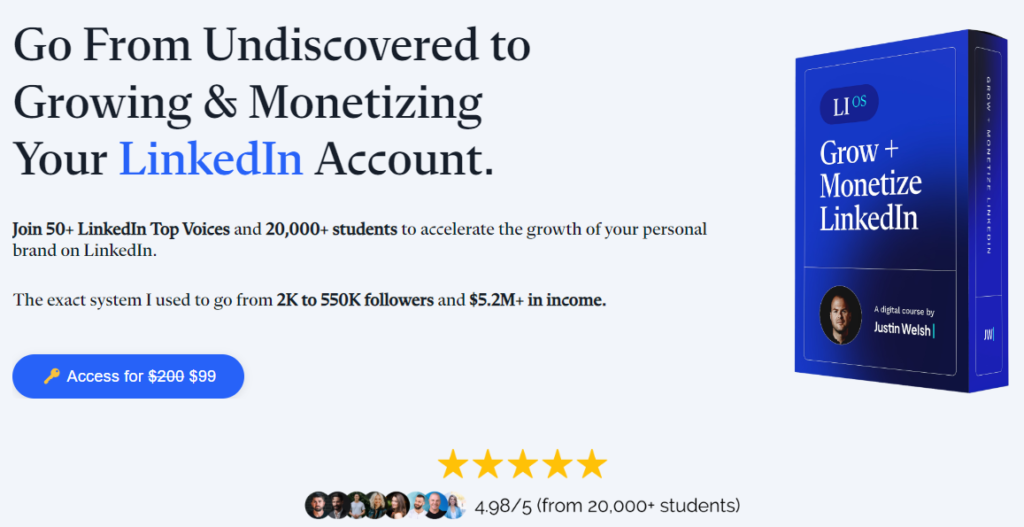
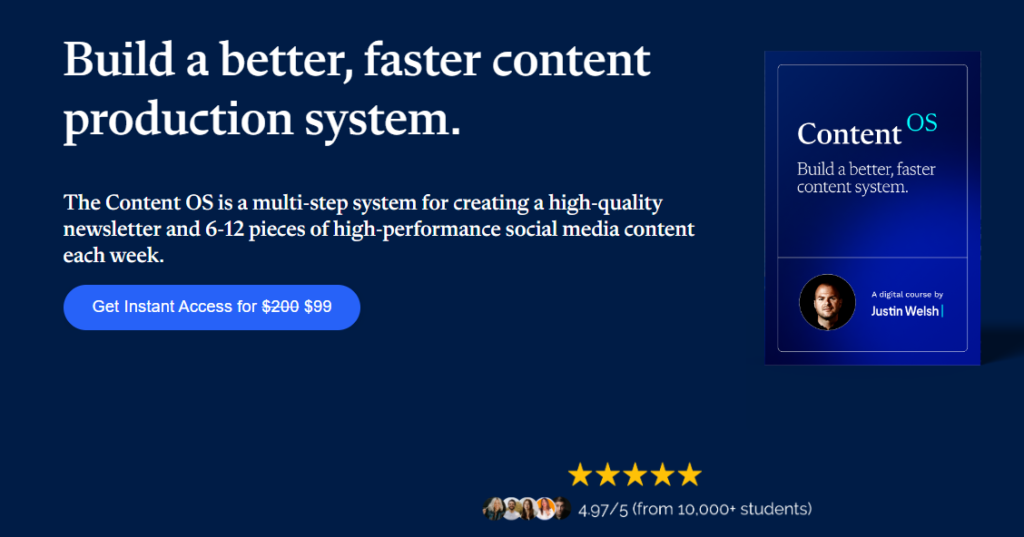
Justin actually has 2 origin products. This goes back to the James Clear tweet from earlier – when you focus on building evergreen assets, your business gets easier and easier to run each year.
At one point, both of these courses were legacy products. Over time, Justin has become more successful, grown his audience, and developed a new product. But he already has SO much validation for both LinkedIn OS and Content OS that it would be stupid to throw them away.
So what did he do?
He simply moved them down a rung on his value ladder and replaced them with a new legacy product: The Creator MBA
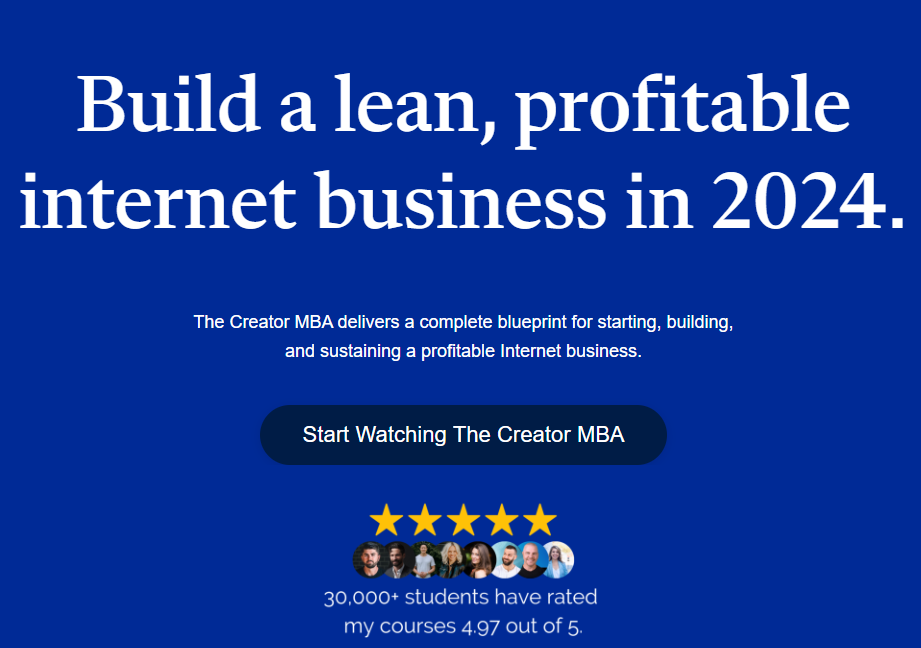
Are you starting to see how important it is to develop a value ladder? Do you see how it allows you to scale your business and repurpose materials you’ve already created? Do you see how it allows you to stay flexible? Do you see how it prevents your TIME from becoming the ultimate constraint in your business.
Justin didn’t have to completely reinvent the wheel. He already had 2 products that were doing extremely well. So even though he released The Creator MBA as his new legacy product, he is still able to profit from LinkedIn OS and Content OS as origin products.
One final note on intermediate value ladders: Justin is a VERY unique situation. He is one of the top creators in the game, so he gets to make his own rules. You can make the argument that his value ladder actually is advanced (which I’ll talk about in the next section), but it was a useful exercise to break it down in the intermediate category.
Although Justin has multiple origin products, it’s not necessary. One origin product and one legacy product is perfect for an intermediate value ladder. As your business grows, if certain products are doing well and you want to keep them in your value ladder as you build new ones, you can 100% do that.
But often times, less is more. The fewer decisions you give to your audience, the more likely they are to act. So having 10 different courses usually just confuses people.
Instead of making new courses/products, a better option would be to continually improve your current product ecosystem (specifically your legacy product) by adding more value. So instead of creating a new product, take that same information, bake it into the products you already have to make them more valuable, do a new launch, and increase the price.
This type of thinking is EXACTLY what it takes to build an advanced value ladder, which is where we’re headed next.
Advanced Value Ladders
You’ll eventually get to a point where you want to serve anybody at any level in your audience. That’s when you would implement an advanced value ladder. Fortunately, it’s essentially the same as an intermediate value ladder with one small addition: an apex product.
This is the final product on your value ladder, reserved only for the most dedicated and most committed members of your audience. This is the highest ticket product or service that you offer.
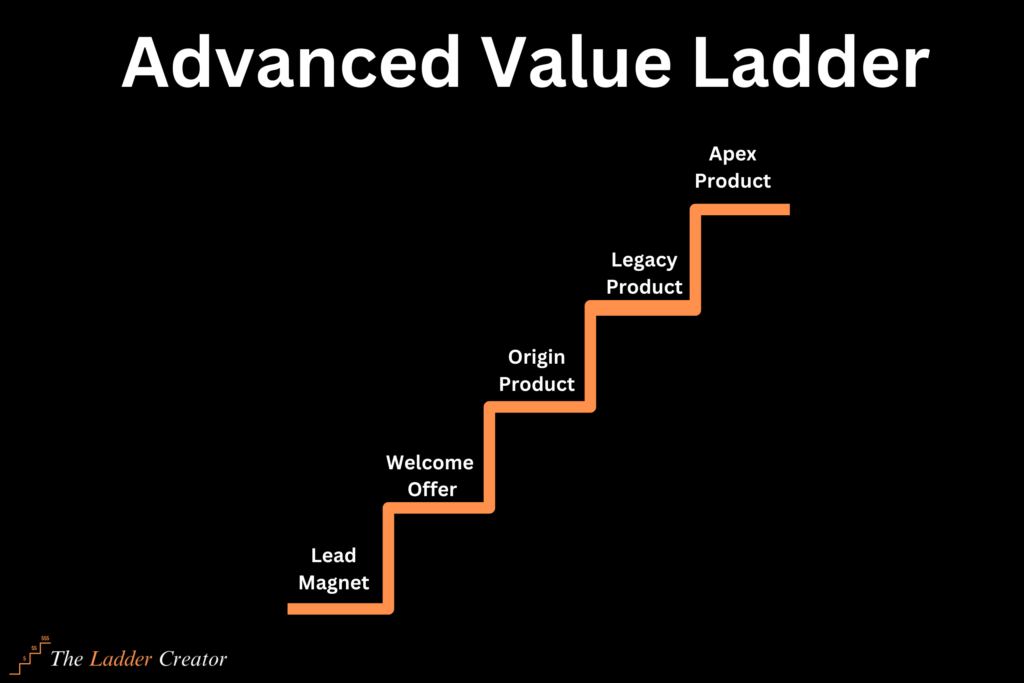
Although I recommend including an apex product, by no means is it necessary. Justin Welsh absolutely crushes it without an apex product. That being said, I want to make 2 points about his value ladder:
- Justin is playing the volume game – he doesn’t need an apex product because he has so much traffic and authority, he can make a GREAT living simply by selling his his origin and legacy products and sponsorships in his newsletter. Could he make more money by creating an apex product? Most definitely. But at this point, time is a MUCH more valuable currency than money to him.
- He sort of has an apex product – you can make the argument that Justin actually does have an apex product. At the end of every newsletter, he includes an option to book a 1:1 call with him. And look at how much he charges for each of those calls:
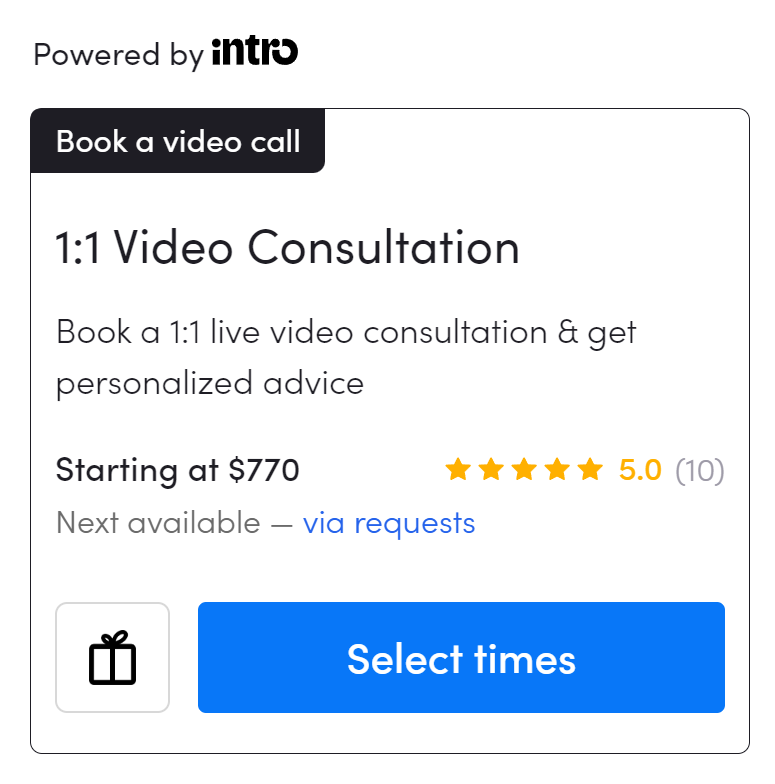
That’s $770 for 15 MINUTES of his time. If you want a full half-hour, you’re looking at a $1440 bill. I don’t know what percentage of his overall revenue comes from calls like this, but you could very well make the argument that this is his apex product.
But again, these are just frameworks to guide you, so splitting hairs over the nitty gritty really isn’t important.
I want to turn the discussion now to a creator with a very well laid out advanced value ladder to give you a better example: Jay Clouse
Jay's Value Ladder
Interestingly enough, Jay actually just put out an article talking about his overall product strategy. As it stands right now, everything is somewhat jumbled.
He has lead magnets, 8 different courses, a bundle, and his high ticket community called The Lab. And if you read that article, Jay will tell you himself that he had all of this backwards for too long.
In the “Beginner Value Ladder” section of this letter, I discussed the importance of figuring out what the overall transformation of your business is. Once you figure that out, it informs EVERYTHING that you do.
Here’s what Jay’s wants the overall goal and transformation to be with Creator Science:


The overall mission is 2 fold:
- Helping people become professional creators
- Helping people become smarter creators
The 2 go hand in hand. The smarter you become as a creator, the more likely you are to become a professional creator.
But when you look at his products, they’re not all aligned with this goal in mind. There’s courses about freelancing, newsletters, podcasts, and building communities. It’s ALL over the place.
Jay is the first to say that he really screwed this up:
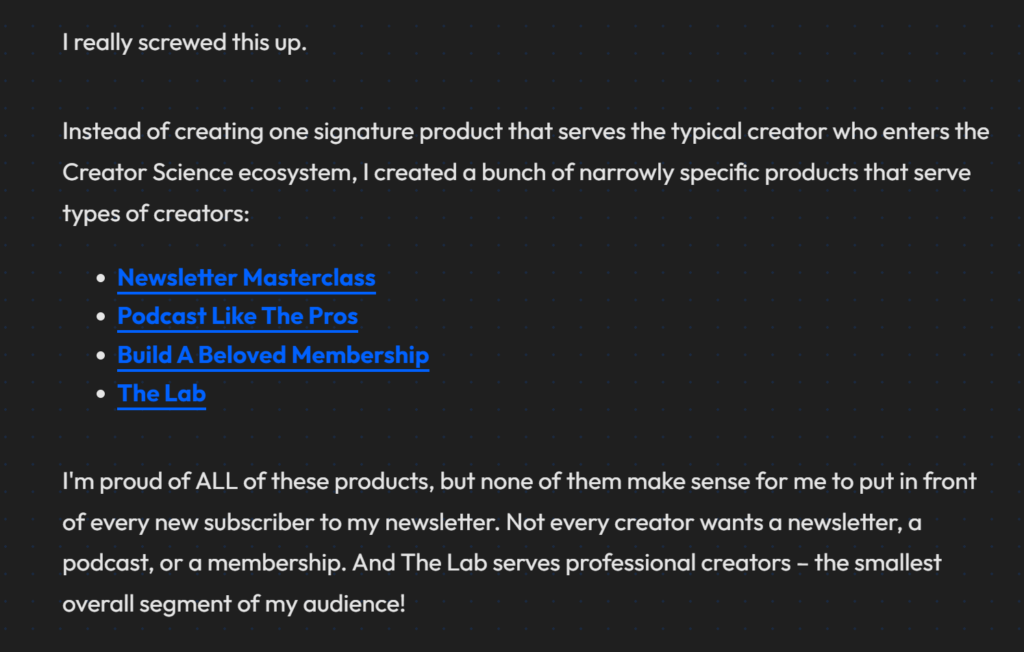
They’re all great products in their own right, but they don’t really serve the overall objective of his business: helping more people become professional creators.
He has since updated his approach and is planning a total revamp to his value ladder. The new one is going to look like this:
- Lead magnet: Creator Crash Course, Toolbox, Revenue Swipe File
- Origin Product: Creator HQ
- Legacy Product: Creator School
- Apex Product: The Lab
It’s a much simpler and streamlined product suite compared to what he currently has. And they all fit the greater purpose of his business.
You’ll probably notice that he doesn’t have a welcome offer. I noticed that too :). And Like I said before, this is a big area where many creators are missing out on valuable information.
Of course, Jay is an absolute legend, so he collects data from his subscribers in a number of different ways, but he’s still leaving something on the table by neglecting his welcome offer (if you want to get REALLY technical about it, he does push people to his podcast in his welcome email sequence, so you can consider that a pseudo-welcome offer if you really want to).
From Intermediate to Advanced
At first glance, it might look like the only difference between an intermediate value ladder and an advanced value ladder is the apex product. That’s certainly a piece of it. But there is something MUCH more important happening underneath the surface.
As you’re developing your value ladder, your attention is somewhat scattered. You have to get new people into your ecosystem, you have to build out backend workflows, AND you have to create your products. Once you finish your apex product, you have the ultimate luxury. Now you can simply focus on 2 things:
- Increasing your distribution power by making your free content so damn good that everyone and their mother wants to consume it
- Making your current product suite better
That’s the biggest difference between an advanced value ladder and an intermediate value ladder. Your focus is much more narrow when you make it to the advanced level. You only have 2 objectives: 1) get more people seeing your free content and 2) keep making the products you currently have better and better.
This is what the top creators do. Amy Porterfield has 3 (paid) products: an evergreen course, an evergreen community, and a course that she does 1 launch for ONCE a year.
3 products. And it’s an 8 figure business. She spends ALL of her time increasing her reach with paid ads and amazing free content AND making the products she already has better each year.
I’ll stop there because these last 2 points are what we’re going to be talking about next week. Keep an eye on your inbox so you don’t miss it 👀.
Happy creating this weekend!
